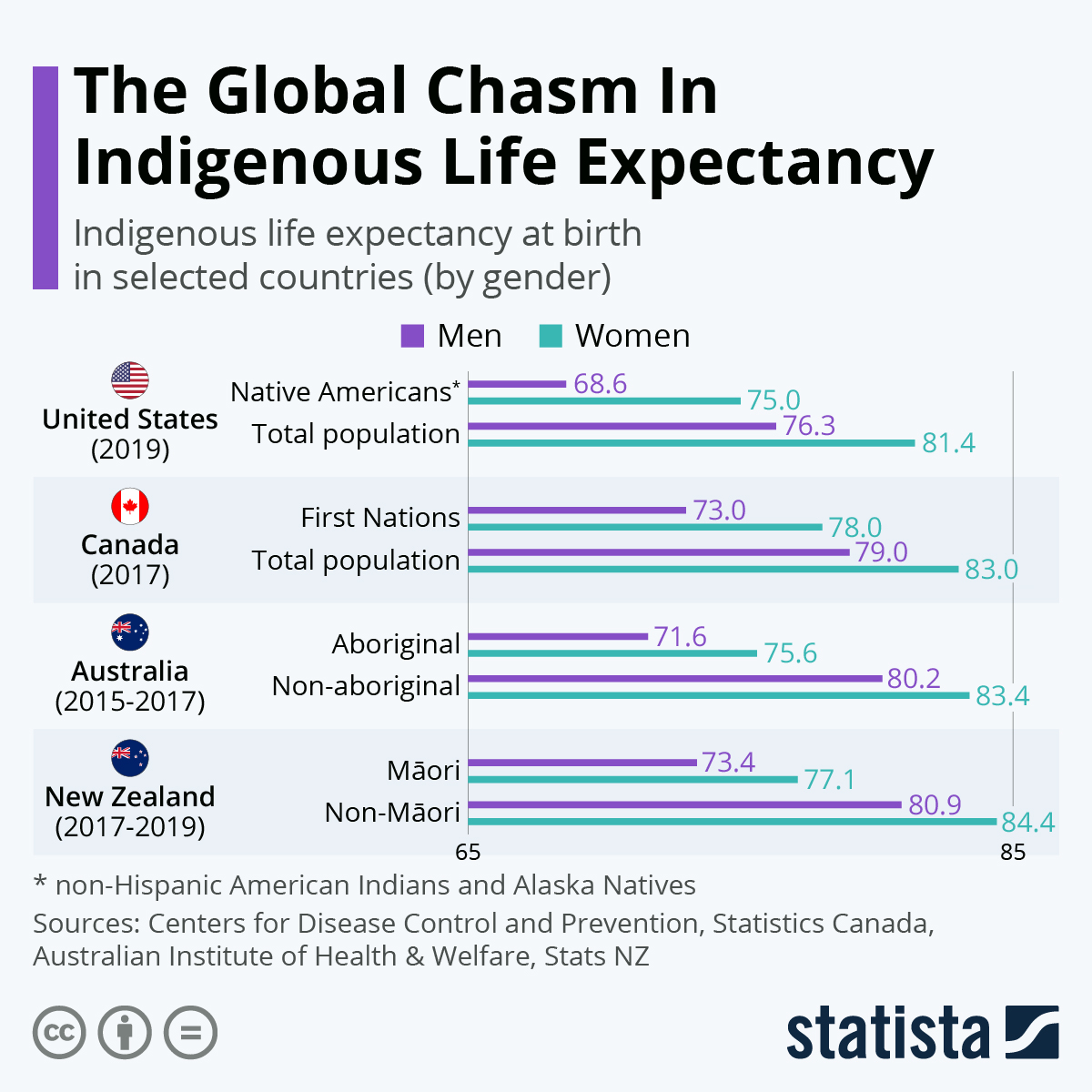In the United States, Canada, Australia and New Zealand, the life expectancy of indigenous people is still significantly lower than that of the non-indigenous population or the population overall.
The harrowing gulf in life expectancy can be attributed to a range of socio-economic factors like lack of access to education, generational poverty and life in disadvantaged regions, which are in turn a legacy of centuries of systemic discrimination. Rural indigenous communities also often lack critical healthcare infrastructure that could provide prophylactic and acute illness care.
In Australia, for example, aboriginal males had a life expectancy of 71.6 years in the period from 2015 to 2017 while non-aboriginal males were expected to live until 80.2 - a difference of almost nine years. The chasm in life expectancy was almost as large in the United States, where in 2019 almost eight years lay between the life expectancy for non-Hispanic American Indian or Alaska Native males and that of the male population overall.





















